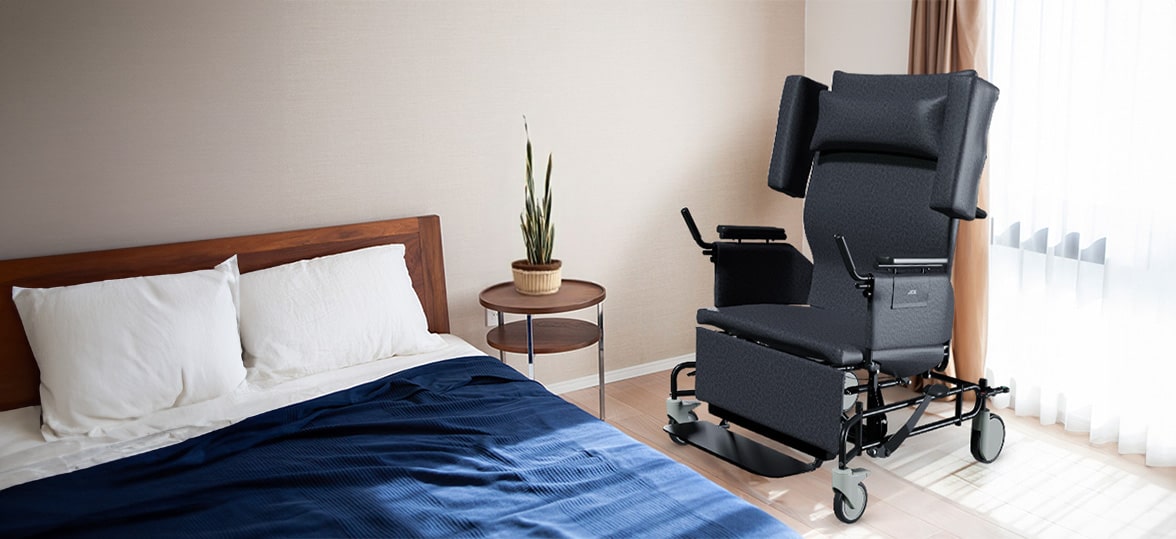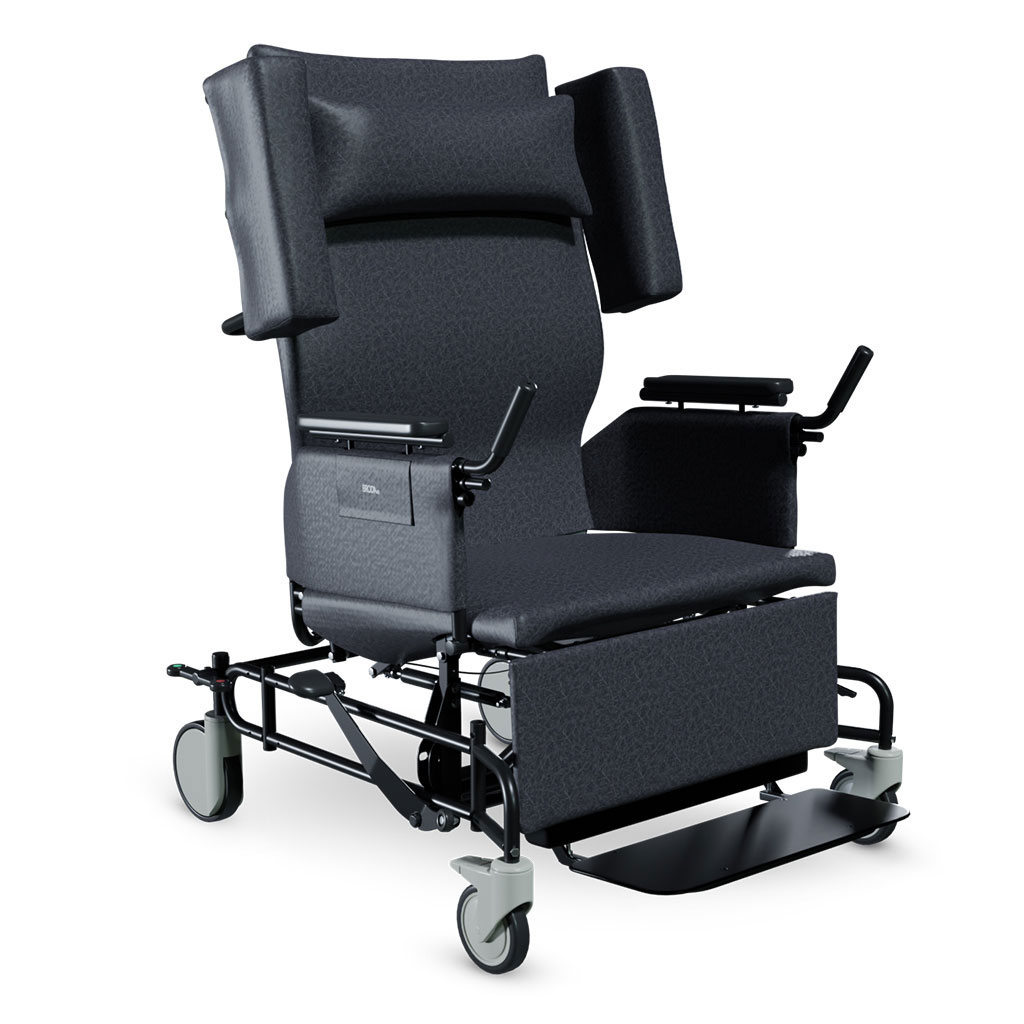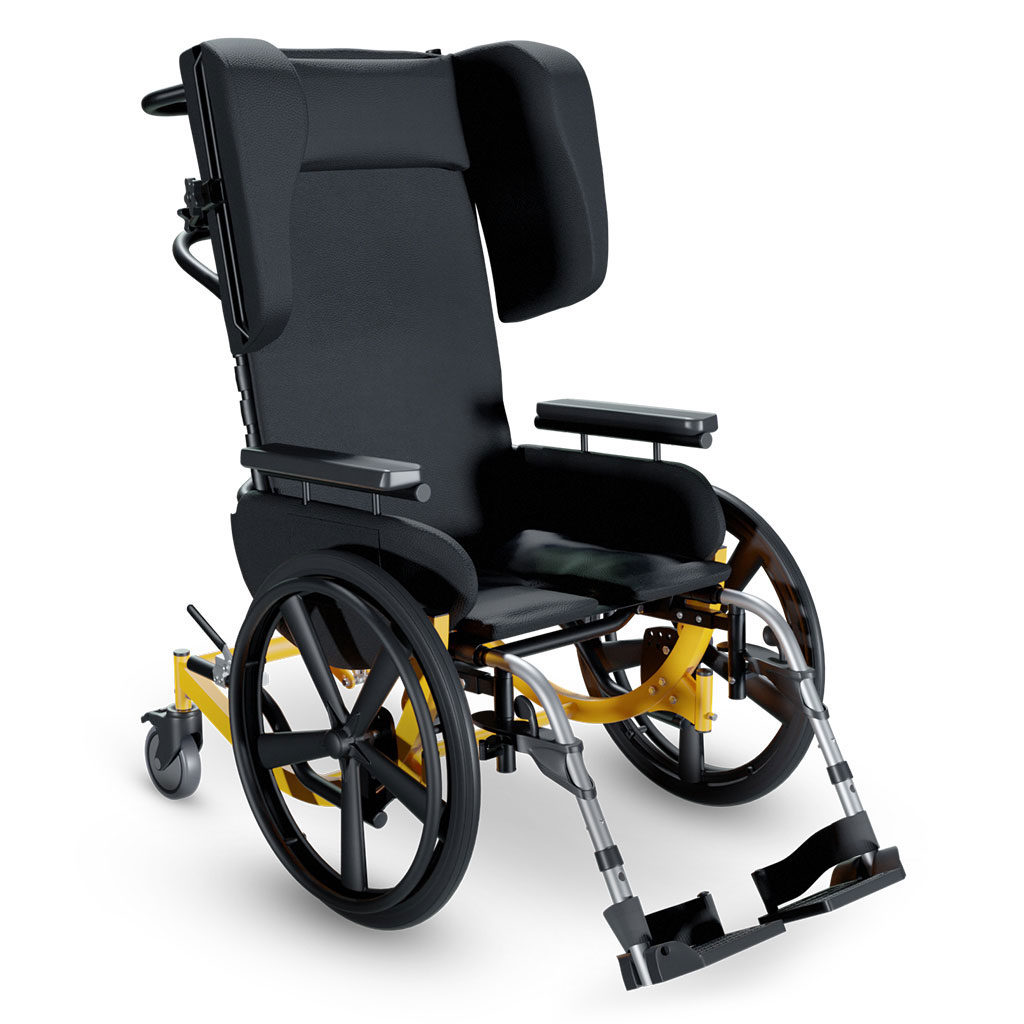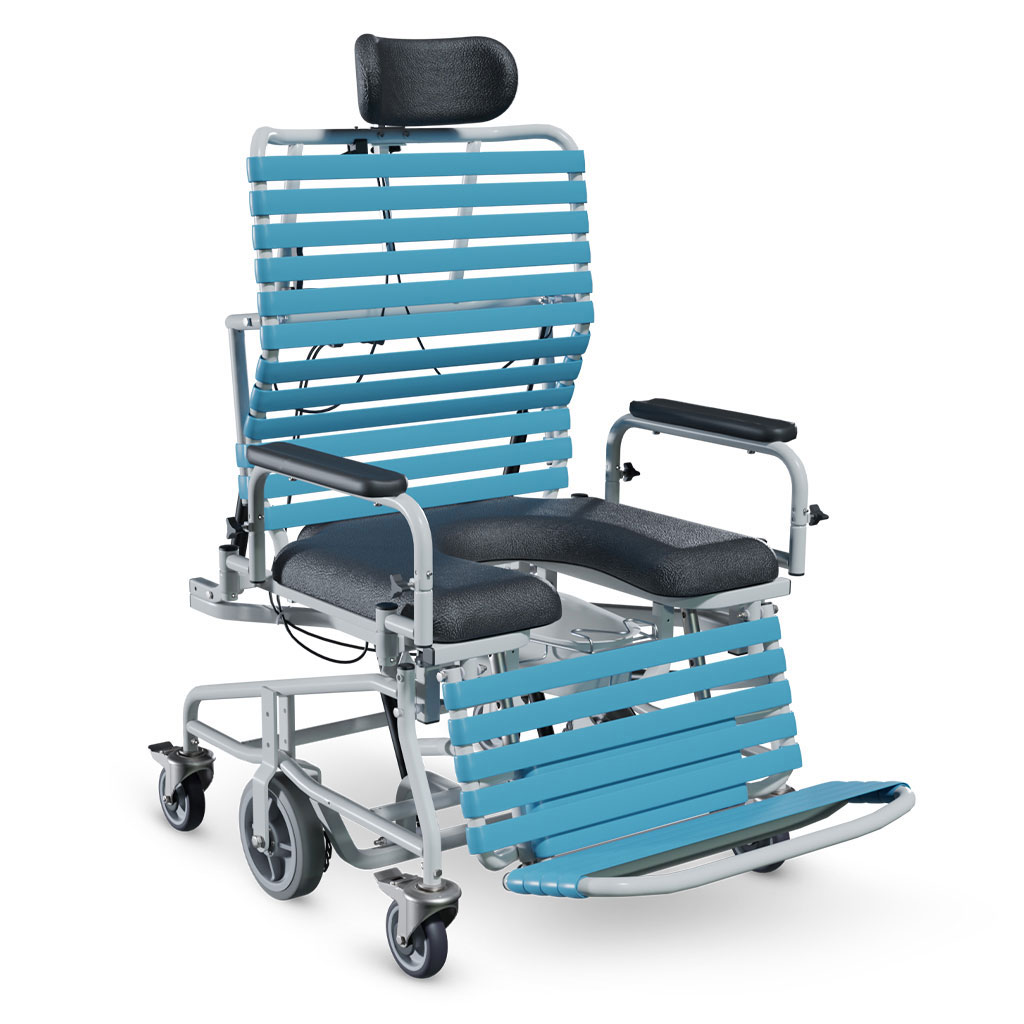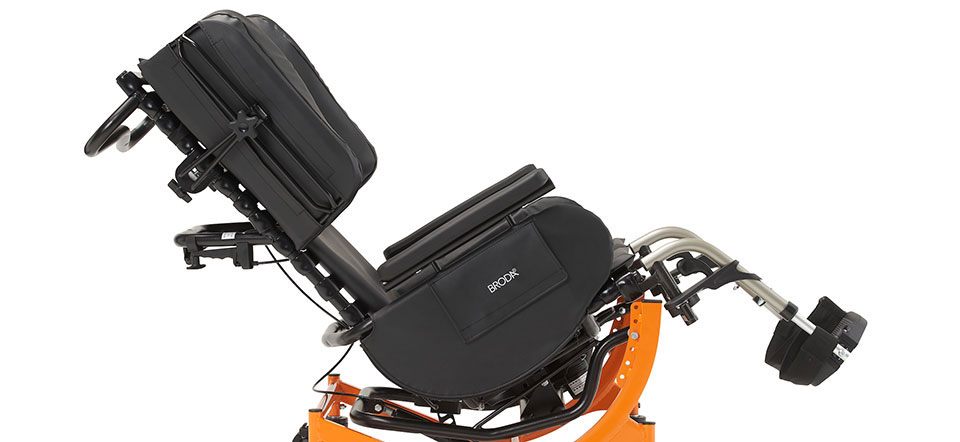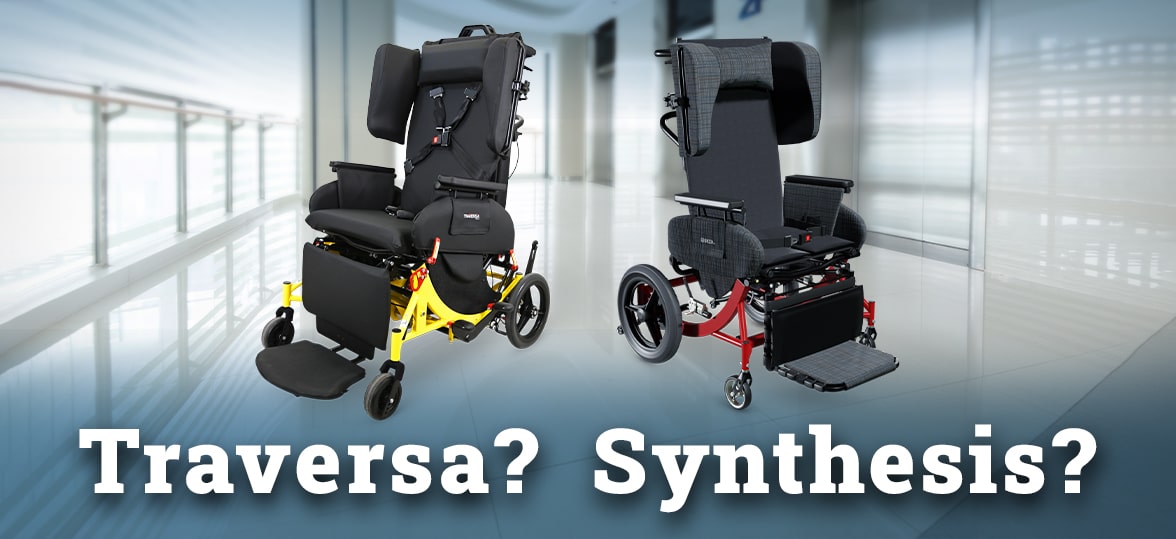Summary
- The importance of choosing the right bariatric wheelchair
- The key components of a bariatric seating assessment prior to wheelchair selection
- The risks of purchasing a bariatric wheelchair that doesn’t fit properly
- How to select the best bariatric wheelchair, including key features to consider
- The best bariatric wheelchairs from Broda, including a shower chair
Choosing a bariatric wheelchair has significant implications for patient care, comfort, and safety. Healthcare professionals such as occupational therapists, physical therapists, and assistive technology professionals (ATPs) may all play an integral role in selecting the right wheelchair to meet the unique needs of bariatric patients.
The right bariatric wheelchair not only provides safe mobility for people needing a high weight capacity, but also offers pressure redistribution and repositioning features for comfort and pressure injury prevention. Safe transfers are also a concern for people of size. Transferring in or out of a wheelchair comes with significant risk of falls and caregiver injury.
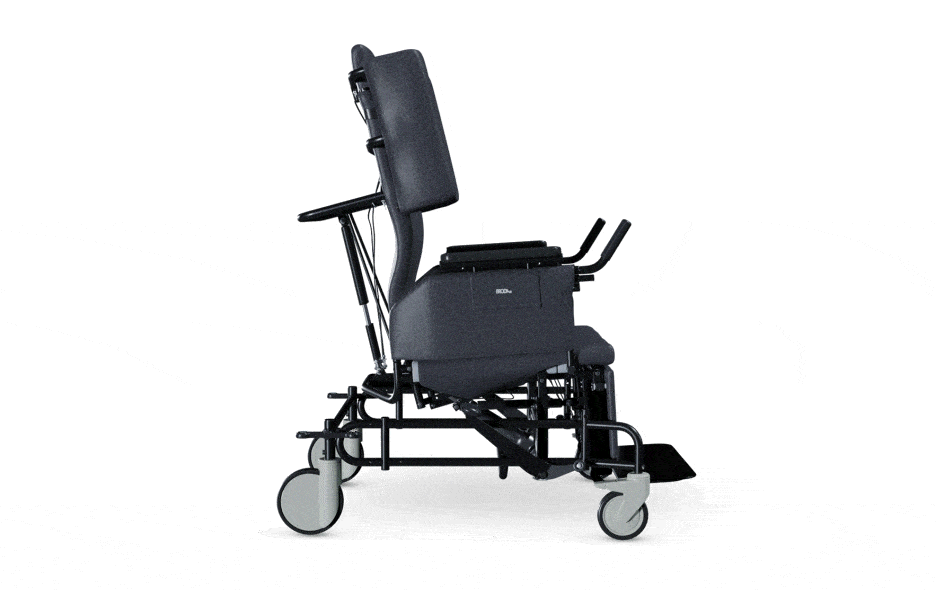
First Things First: The Seating Assessment
Before considering a specific product, it’s critical for the person to receive a thorough seating assessment from a qualified health care professional such as an occupational therapist or an ATP. This assessment will provide a complete view of the person’s sizing needs, mobility goals, and activities of daily living. The results also serve as proof of the person’s medical necessity for insurance purposes.
A quality bariatric seating assessment will include:
- Shoulder Width
- Torso Width
- Seat Width
- Calf Width
- Back Height
- Back Length
- Gluteal Shelf Measurements
- Armrest Height & Length
- Seat Depth
- Seat Height
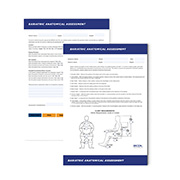
Don’t Miss Any Measurements
Download the Broda Bariatric Seating Assessment Form as a handy guide.
The Risks of Improper Wheelchair Fit
Incorrect or incomplete measurements will result in an improperly fitting wheelchair. Even a slightly incorrect fit can cause poor posture, which can lead to pressure injuries and long-lasting postural abnormalities that can be difficult to correct. The wheelchair fit has implications for caregivers as well. When the equipment doesn’t fit properly, the user may have additional instability, need more frequent repositioning, and will likely need additional assistance to perform activities of daily living (ADLs) where they may otherwise be independent with the right wheelchair choice.
If the discomfort is significant enough, the individual may not be comfortable getting out of bed. Patients who are bedridden due to uncomfortable wheelchairs experience preventable adverse outcomes, such as muscle atrophy, poor digestion, depression, and pressure injuries, which are painful and expensive to treat.
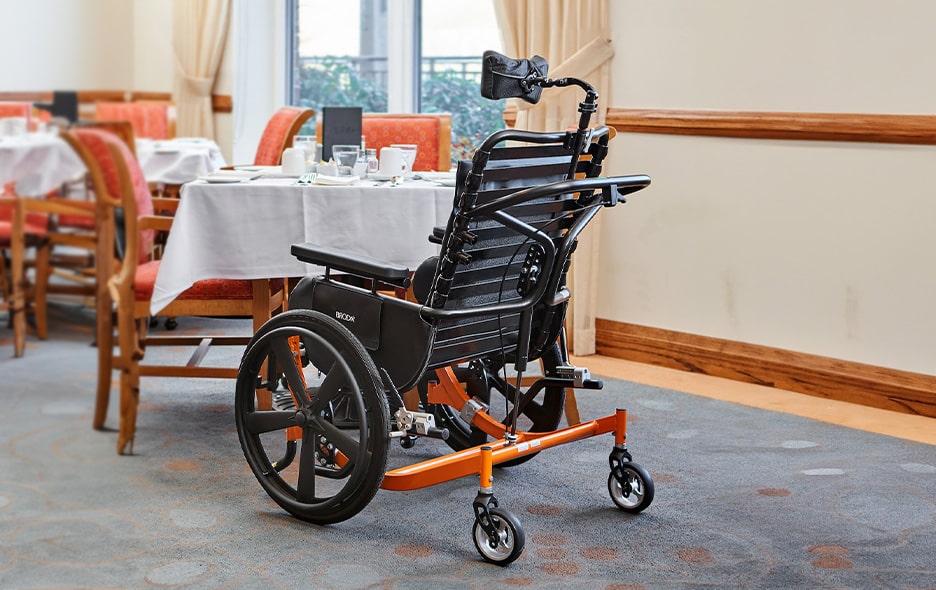
How to Select the Best Bariatric Wheelchair
When selecting a bariatric wheelchair, it’s essential to consider the following features:
High Weight Capacity
Bariatric wheelchairs are designed and safety-tested to accommodate higher weight capacities without compromising stability or durability. Always consider the person’s weight history to accommodate fluctuations and ensure the longevity of the equipment over time.
Best-in-Class Pressure Redistribution
A primary consideration when selecting a bariatric wheelchair is pressure management. Wheelchairs that offer superior pressure redistribution, such as Broda’s models with Comfort Tension Seating®, minimize the risk of pressure ulcers and enhance overall patient comfort.
No-lift Repositioning
To reduce caregiver strain and provide dignified care, no-lift repositioning features allow for easier and safer adjustments for the patient. Look for chairs, such as those in Broda’s range, that offer this capability.
Infinitely Adjustable Tilt-in-Space & Recline
An optimal fit is non-negotiable, so adjustable positioning becomes necessary. The right bariatric wheelchair should feature versatile adjustments to cater to various body types, providing both comfort and proper postural support.
Gluteal Shelf Accommodation
Support around the gluteal area is essential for bariatric patients. Broda wheelchairs have specially designed seats that accommodate and comfortably support this area.
Anterior Tilt for Transfers
Wheelchairs with an anterior tilt aid in facilitating sit-to-stand transfers, significantly enhancing patient independence and reducing the risk of injury during the transfer process.
Removable Arm and Lateral Supports
The ease of transferring a patient in and out of a wheelchair is paramount. Models like the Sentinel Shower Commode are equipped with removable arm and lateral supports that simplify side transfers, catering to the patient’s needs and caregiver ergonomics.
The Solution: Bariatric Wheelchairs from Broda
Within Broda’s suite of products, particular models stand out for their unique features that respond to bariatric needs.
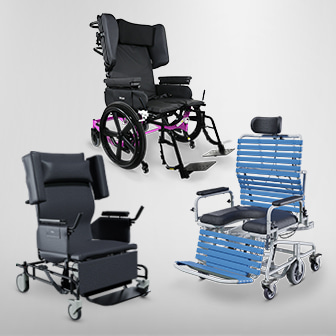
Bariatric Wheelchairs from Broda
- Vanguard Bariatric Wheelchair
- Encore Pedal Wheelchair
- Revive Bariatric Shower Commode
The Vanguard Bariatric Wheelchair
For wheelchair users who need full support for daily mobility, the Vanguard Bariatric Wheelchair provides the ultimate comfort, while boasting industry-leading safety features. Safe for users up to 600 lbs., the Vanguard maneuvers easily throughout the home or facilities. The “no-lift” tilt feature is operated by an ergonomic foot pump, saving caregivers the risk of straining or injuring themselves during repositioning. The assisted back recline uses special pressurized gas cylinders to gently ease the user down into a reclined position and back up again. Broda’s proprietary Comfort Tension Seating® system conforms to the wide variety of bariatric body types, reduces the risk of pressure injuries, and promotes airflow for reduced heat build-up.
The Encore Pedal Wheelchair
The Encore Pedal Wheelchair provides increased independence for individuals who wish to self-propel with their hands or feet. With the optional Heavy Duty Package, the Encore Pedal supports a robust weight capacity of 500 lbs., granting peace of mind and freedom of movement to users with high weight considerations. Additionally, it’s thoughtfully designed to enhance patient mobility with its low seat surface height. Available as low as 12.5″ from the floor, the Encore Pedal Wheelchair promotes an easy heel strike for foot-propulsion.
Learn more about the Encore Pedal
Revive Bariatric Shower Commode
Bathing bariatric wheelchair users presents unique challenges. Bathroom spaces can be tight and floors may be slippery. Caregivers often cite bathing patients as the number one reason for wishing to stop working in a healthcare setting. The Revive Bariatric Shower Commode alleviates the concerns of injury, inconvenience, and lack of patient dignity. Perfect for users weighing up to 800 lbs., the Revive Bariatric Shower Commode offers a comfortable and dignified hygiene experience.
Learn more about the Revive Bariatric Shower Commode
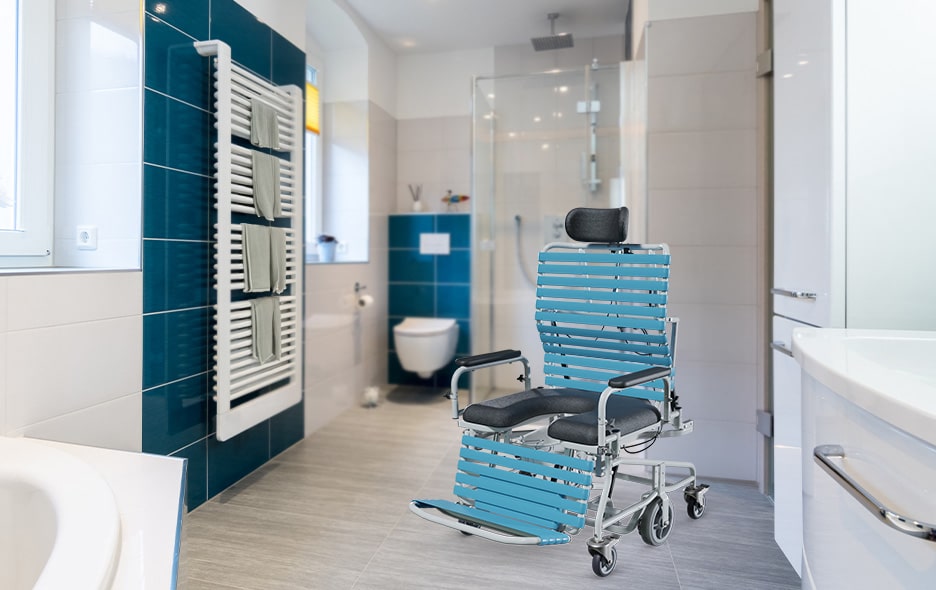
In Conclusion
The decision to choose the right bariatric wheelchair should be made with care and consideration of the individual needs of each patient, ensuring that they receive the comfort and support they require. Take advantage of the comprehensive resources Broda provides, engage with their supportive staff, and invest in a wheelchair that offers safety, comfort, and improved quality of life for heavier individuals.
For more information about Broda’s range of products and to start your selection process, consult the ‘How to Order’ guide, and explore the ‘Start Your Broda Journey’ guide for valuable insights. Each patient deserves the best care, and with the right wheelchair, you can provide just that.
